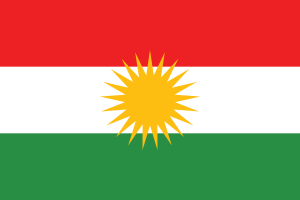Language/Northern-kurdish/Grammar/Plurals
Hi Northern Kurdish learners! 😊
In this lesson, we will learn about plurals in Northern Kurdish grammar. As you may know, plurals are used when there is more than one of something. In Northern Kurdish, we use different methods for forming plurals, so let's have a closer look!
With the completion of this lesson, consider investigating these related pages: Northern Kurdish Grammar: Subordinating Conjunctions, Northern Kurdish Grammar Lesson: Understanding Place Adverbs, Genitive Case & Negation.
Regular Plurals[edit | edit source]
One of the most common ways to form plurals in Northern Kurdish is by adding the suffix "-ên" to the end of the word. This suffix is used for most masculine nouns. Here are some examples:
| Northern Kurdish | Pronunciation | English |
|---|---|---|
| کتێب | kitêb | book |
| کتێبەکان | kitêbekan | books |
| سەر | ser | head |
| سەرەکان | sarekan | heads |
| مێو | mev | fruit |
| مێوەکان | mevekan | fruits |
As you can see, the plural is formed by adding the suffix "-ên" to the end of the word. However, be aware that some words may have an irregular plural.
For feminine nouns, we use the suffix "-an" to form plurals. Here are some examples:
| Northern Kurdish | Pronunciation | English |
|---|---|---|
| خۆشک | xoşk | girl |
| خۆشکان | xoşkan | girls |
| خانم | xanım | woman |
| خانمەکان | xanimekan | women |
| مێ | me | moon |
| مانگەکان | manyekan | moons |
For some words, we may use both the masculine and feminine plurals, depending on the context. For example, the word "ئەندام" (member) can have two different plurals:
| Northern Kurdish | Pronunciation | English |
|---|---|---|
| ئەندامەکان | endamekan | members (feminine plural) |
| ئەندامان | endaman | members (masculine plural) |
Dual Plurals[edit | edit source]
In Northern Kurdish, we also have a special plural form for pairs of things. This form is called the "dual plural". To form the dual plural, we add the suffix "-یهک" to the singular form of the word.
Here are some examples:
| Northern Kurdish | Pronunciation | English |
|---|---|---|
| دڵ | del | heart |
| دڵ-یهک | delyek | pair of hearts |
| دوور | dûr | door |
| دوور-یهک | dûryek | pair of doors |
There are also some words in Northern Kurdish which have irregular dual plurals. For example, the word "لەم" (hand) has the dual form "لەمهیهن" (pair of hands).
Plurals of Loanwords[edit | edit source]
Loanwords are words that have been borrowed from other languages. Like in English, we usually do not change the plural form of loanwords in Northern Kurdish. However, some loanwords may be adapted to the Northern Kurdish grammar rules. In this case, we use the regular plural forms described above. For example:
| Northern Kurdish | Pronunciation | English |
|---|---|---|
| تاکسی | taksî | taxi |
| تاکسیکان | taksîkan | taxis |
| رۆکێشان | rokeşan | rockers |
As you can see, we add the "-ên" or "-an" suffixes as usual to form the plural.
Dialogue[edit | edit source]
To help you understand plurals in Northern Kurdish better, here is a dialogue between two friends:
- Person 1: سلام، چۆنیت؟ (selam, çonît?) (Hi, how are you?)
- Person 2: باشم، تو؟ (başim, to?) (I'm good, and you?)
- Person 1: بەخێری، ناوەکانی خۆشکانی تۆ بچوو؟ (bexerî, nawekanî xoşkanî to bçwû?) (Good, did your girls have names?)
- Person 2: ئەیرە، زنجیرەوە و زیندووە. (ere, zinjirêwe û zîndûwe) (Yes, their names are Zinjirewe and Zinduwe.)
In this dialogue, Person 1 asked about the names of Person 2's daughters. Person 2 replied with their names, "Zinjirewe and Zinduwe." Notice how the noun "خۆشک" (girl) is pluralized with the "-an" suffix.
Conclusion[edit | edit source]
Congratulations! Now you know how to form plurals in Northern Kurdish grammar. Remember that regular plurals are formed by adding the "-ên" or "-an" suffixes, while dual plurals are formed by adding the "-یهک" suffix. If you have any questions or would like to practice more, you can use the Find native speakers and ask them any questions. You may also want to check out our Grammar page for more Northern Kurdish grammar lessons. Happy learning! 😊
Sources[edit | edit source]
Finished this lesson? Check out these related lessons: Northern Kurdish Grammar: Learn about Personal Pronouns in ..., Verb Conjugation, Coordinating Conjunctions & Accusative Case.

